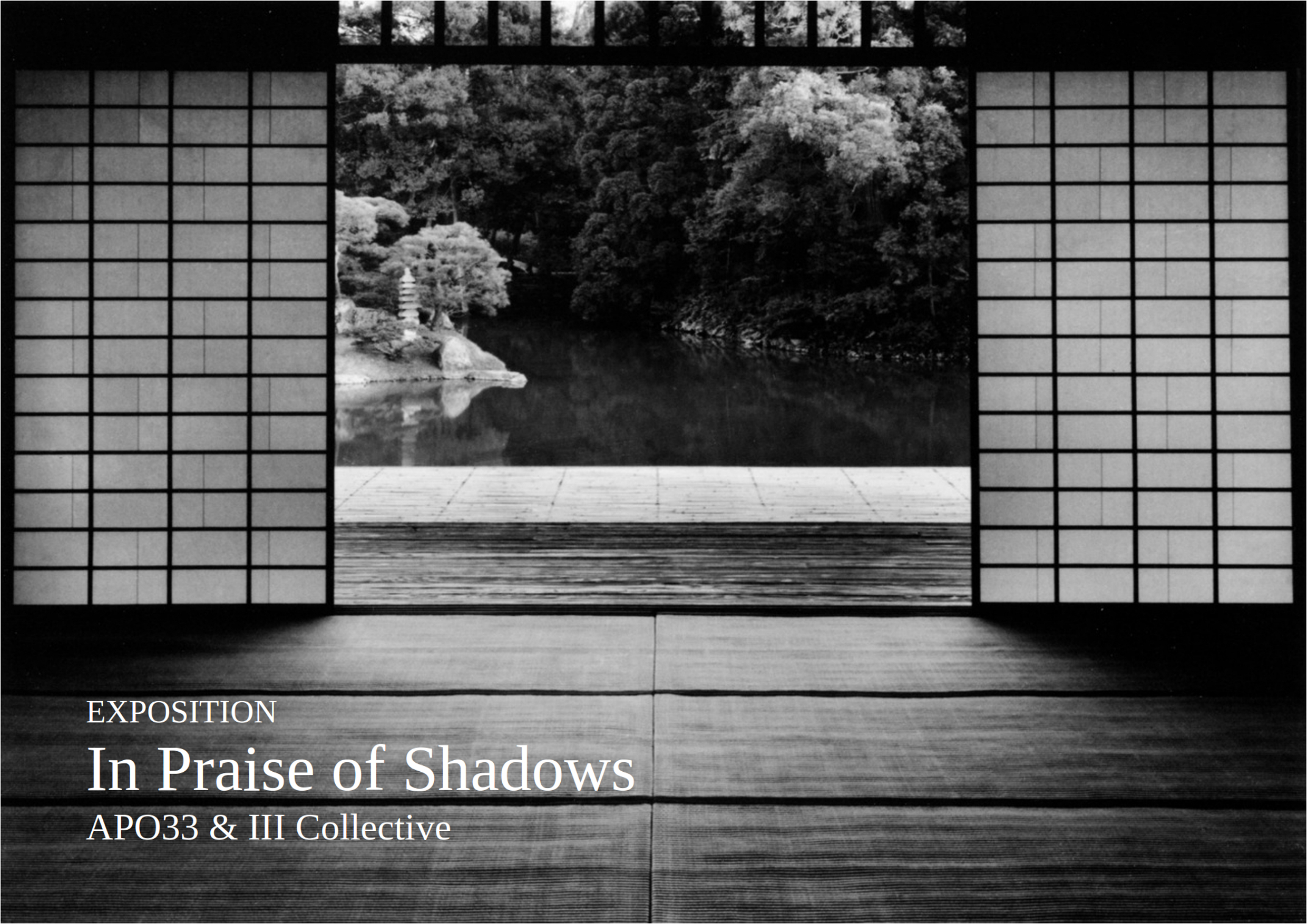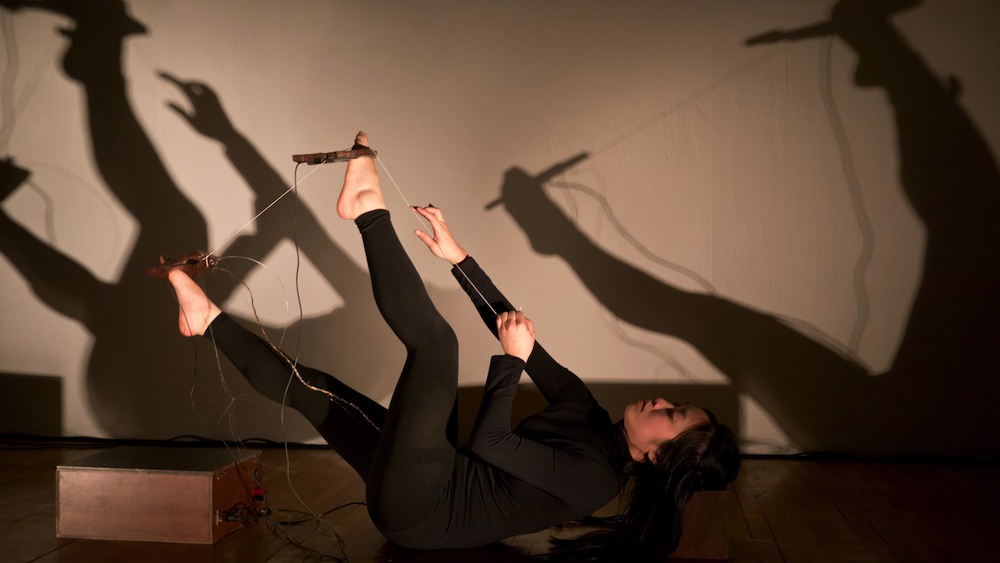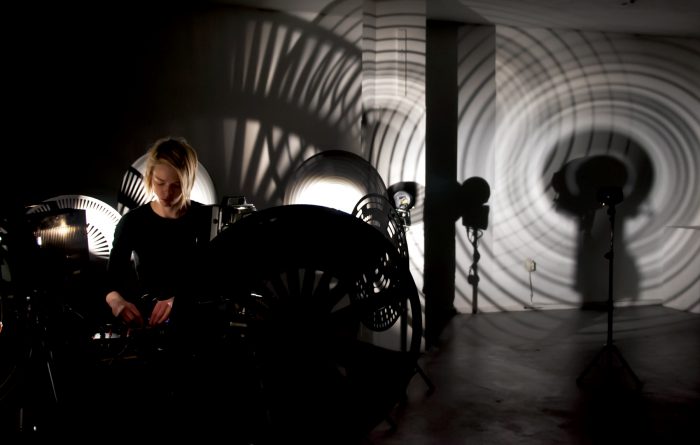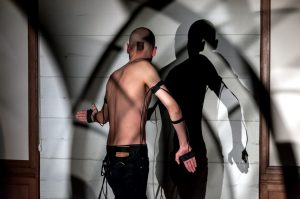
Carte Blanche : III Collective – In Praise Of Shadows
III is an artist-run platform based in The Hague which supports idiosyncratic research trajectories that zigzag between disciplines and distribution channels.
Inventing new instruments and out-of-the-box presentation formats that engage with the four dimensions of image, sound, space and the body, III strives to offer unique experiences to all kinds of audiences.
Opening on Tuesday, July 12th at 7pm (19h)
Visit : From Thursday to Saturday, from 3pm to 6pm.
Free Entry : Plateforme Intermédia – La Fabrique, 8 boulevard Léon Bureau in Nantes.
https://www.facebook.com/events/1021261354606303/
http://iiinitiative.org/production/in-praise-of-shadows/

When the Darkness of the Room Melts on Your Tongue
Charlotte Farrell
In Junichiro Tanizaki’s book In Praise of Shadows, from which the exhibition of the same title draws inspiration, the author begins by musing on the meditative quality of a traditional Japanese bathroom. He explains that their light, sound, and texture coalesce to create an ambience that Western bathrooms tend to overlook. A Western bathroom’s bright, white, glossiness compares starkly to the wooden features and dim lighting of the Japanese. Not only are the latter’s wooden features aesthetically pleasing for Tanizaki, but they minimize sound; softening the crude reverberation of urination to a gentle trickle, as if water were gently flowing over stones.
Tanizaki asks of the Western bathroom: “what need is there to remind us so forcefully of the issue of our own bodies”? So, too, do the works that emerge out of the artist run platform, iii based out of The Hague question the role of the body in relation to space. Radically interdisciplinary, these artists work across mediums with a fierce curiosity and rigorous, inventive skill. The works comprising iii’s exhibition In Praise of Shadows explore and question the limitless potential of the sensing body. In particular, they examine the relationship between the body and sound in space, and what potential encounters can be crafted in becoming attentive to sensations in excess of the skin.
 One technique the artists use to this end is that they displace vision as the primary sense organ, opening up the potential for cross-modal transfer. Cross-modal transfer is the imbrication of the senses. Synesthesia is an extreme example of cross-modal transfer, where sounds may become tastes, or tastes may become colours etc. In Wen Chin Fu’s video piece, OHHO/Body Cello, the body sounds as much as sounds. This ‘bodying’ of the environment makes the atmosphere voluptuous.
One technique the artists use to this end is that they displace vision as the primary sense organ, opening up the potential for cross-modal transfer. Cross-modal transfer is the imbrication of the senses. Synesthesia is an extreme example of cross-modal transfer, where sounds may become tastes, or tastes may become colours etc. In Wen Chin Fu’s video piece, OHHO/Body Cello, the body sounds as much as sounds. This ‘bodying’ of the environment makes the atmosphere voluptuous.
Likewise, in Dewi de Vree and Patrizia Ruthensteiner’s Magnetoceptia, gnarled wood becoming radio antenna quite literally extends the body with and into its environment. The indistinguishability of sensation’s limits in these works extends the body in ways that defy the assumption of a self-contained human subject, and of the fivesenses being neatly compartmentalized.
 In Jonathan Reus’ latest iteration of the sound performance series Satellite Skin included in the exhibition, the hinge between sound and movement folds, whereby dancer’s bodies produce sound through their movement as much as the movement is produced through sound. Matteo Marangoni engages with theurban space of Groningen as a site through which he creates playful encounters, where sound operates as a reverberating compass to the environment. These artists’ attention to the materiality of site renders sound a performative and architectural phenomenon.
In Jonathan Reus’ latest iteration of the sound performance series Satellite Skin included in the exhibition, the hinge between sound and movement folds, whereby dancer’s bodies produce sound through their movement as much as the movement is produced through sound. Matteo Marangoni engages with theurban space of Groningen as a site through which he creates playful encounters, where sound operates as a reverberating compass to the environment. These artists’ attention to the materiality of site renders sound a performative and architectural phenomenon.

Dim light is a trope some of the artists employ to soften to viewer’s gaze, extending perception to the periphery. For Tanizaki, the beauty of Japanese lacquerware is squandered by electrical light, where the gold-leafed surfaces where originally intended to serve as a natural source of illumination in a candlelit room. Both ornamental and practical, the artists engage with materials that draw our attention to the edges of vision, extending seeing to the periphery and its beyond.
 Shadow Puppet? by Mariska de Groot and Dieter Vandoren dwells in the blur between dark and light; the human body becoming an extension of the apparatus that generates sound and light in a choreographic ecology. Into the shadows, the softening of the world’s edges enables perceptual nuances to emerge.
Shadow Puppet? by Mariska de Groot and Dieter Vandoren dwells in the blur between dark and light; the human body becoming an extension of the apparatus that generates sound and light in a choreographic ecology. Into the shadows, the softening of the world’s edges enables perceptual nuances to emerge.
In another instance in his book, Tanizaki describes yōkan, a Japanese dessert made from red bean paste. He writes, “You take its cool, smooth substance into your mouth, and it is as if the very darkness of the room were melting on your tongue.” The relationship between the dim light of the room, and the yōkan dissolving on his tongue is a meditative encounter, close to something divine. He is eating with his eyes; seeing with his tongue; smelling with his touch. In cross-modal transfer, the senses become scrambled. Or, rather, the five senses’ inherent scramble comes to the fore, becoming felt. Sensation’s scramble in so- called ‘normal’ perception dwells in the shadows. The artworks comprising In Praise of Shadows gently illuminates these shadows, sculpting and nudging their indistinguishability into dynamic form.
Each artist in the exhibition evokes a sense of ritual through individual processes of scrambling sensation. They ask: How can art displace the forceful emphasis on our bodies in ways that make sensation felt anew? Or, how can art make us conscious of the way we are always nonconsciously experiencing sensation in excess of ourselves? The artworks in In Praise of Shadows romance, play, and make poetry with their environment, in turn drawing the environment into its folds. The cross-modal architectures comprising the exhibition lace the encounter of sensorial expansion with a potency and a poetry, too. In tribute to the shadows.

